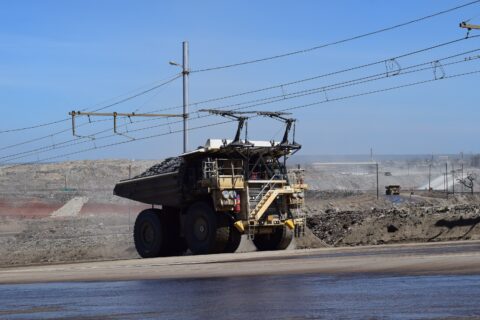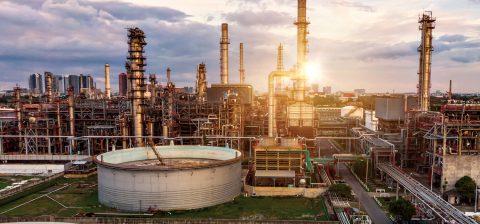SA Mining
Renewables On The Rise
A country’s energy agenda remains paramount to its achievement of economic success. SA Mining’s Nelendhre Moodley recently caught up with Africa-focused consulting and publishing company In On Africa’s associate director Ogi Williams to chat about the latest influences impacting Africa’s energy agenda.
Trace the change in the global/African energy agenda from five years ago?
Globally the move has been one towards increasing energy efficiency, decreasing carbon emissions, and making greater use of renewable resources as part of the energy mix. We have seen the more developed markets also begin to decentralise their structures towards separate entities operating the generation of power versus transmission and, additionally, distribution. Consumers have also become more conscious of what products they purchase and how these products consume energy, and are seeking more information from their service providers in this regard. This has also pushed the agenda of decentralisation further into the consumer realm with consumers being able to get consumption data on a lot more granular level. In some markets like the United States, Australia and Germany, they have the ability to purchase power from different suppliers depending on the cost of generation at a particular point in time. All very progressive strides.
In Africa, given the need to first electrify the continent, the primary agenda has been to increase access. Large-scale hydropower projects have been most prominent in the past decade given the ability to look ahead and project when and at what price investors will receive returns. Solar too has taken root especially in North and Southern Africa, while wind is being explored in certain countries with high exposure – like South Africa. Given the large disparity in access between rural and urban areas, some African governments are also in favour of off-grid or mini-grid solutions. There is evidence of these developments in countries like Tanzania, Zambia and Rwanda. North and Southern Africa (particularly South Africa) are still stuck in a fossil-fuel cycle however, coupled with ageing infrastructure. Investments are being made in renewables, though their pace could be sped up by governments.
What can we expect from a future energy mix?
In the case of South Africa, we can expect a lot more renewable energy once the government opens up the Renewable Energy Independent Power Producer Procurement (REIPPP) Programme to bidding again. We are fast approaching the 90% barrier for electrification in the country. Efficiency in generation and upgrading existing transmission and distribution networks are likely to be the top priorities for the government going forward. Nuclear will not happen due to fiscal constraints, so government will need to look more closely at how to maximise the potential for additional renewables, while increasing the efficiency of baseload coal power generation and refurbishing infrastructure.
What strides are being made by the sector globally and in Africa?
Large strides are being made to integrate more renewables in the energy mix of many developed markets. Europe is leading the way in this regard with Germany, the Netherlands, the UK and others part of the European Union (EU), as part of a drive to curb carbon emissions and meet the targets of the Paris Accord. Asia, with China in the lead, is also pushing quite strongly towards renewables with China now being the world’s largest exporter of solar panels. In Africa renewables are considerably more feasible to implement especially in mini- or off-grid settings. Similar to the approach to financial services in how Africa is leap-frogging the rest of the world in terms of mobile innovation, so too is Africa moving ahead with decentralised grids that generate their own power independently of the national grid. Soon enough, these installations will be able to sell power back to the national grid once two-way systems are put in place – we can expect this from South Africa in due time given enough utility reform and the growth of public-private partnerships (PPPs).
Following the Fukushima Daiichi nuclear disaster, many western countries chose to reduce their focus on nuclear. Has the clean fuel drive changed this in any way?
The global sentiment around nuclear is likely to stabilise at some point given more research into safety measures aimed at preventing similar disasters. At this stage western and eastern countries alike are reviewing these issues before moving ahead with new plants. This pause has however had a considerable impact on the nuclear industry, with industry giants such as Japan’s Toshiba having to sell its stake in US-based Westinghouse due to bankruptcy. Such a case also highlights the pressure that the industry is under at the moment. We may soon see innovation in small-scale nuclear reactors – South Africa was on this trajectory two decades ago and this could be an initiative worth revisiting.
Highlight some of the emerging trends in the energy scenario, including demand for electric vehicles.
Demand for electric vehicles (EV) is growing, albeit very slowly – global EV sales hit 750 000 units in 2017 with the total car parc standing at around 2 million. EVs make up around 1.5% of the total vehicle market in China, France and the UK. China is by far the largest market accounting for 40% of global sales – twice as much as the US. The country is leading in terms of EVs not only in the standard passenger vehicle sense but also in diversification with some 200 million electric two-wheelers, around 4 million low-speed EVs and roughly 300 000 buses. Demand will be strong from China going further into 2018, especially given critical issues such as air quality in cities like Beijing. As a result, demand for copper, cobalt and lithium will continue to rise as demand for EVs increases, and resultant demand for lithium-ion batteries does as well.
How focused is the continent on gas when compared to the rest of the world?
Quite focussed. Though numerous countries would like to increase the participation of renewable energy in their national energy mix, many will continue to operate through fossil-fuel-based sources such as oil, gas and coal. Of the three, gas is the cleanest in terms of emissions. As a result, some countries will look to convert existing coal- or oil-based power generation plants towards gas. The US and China are very focused on this, though China is struggling more in this regard as evidenced by the shortage of supply during the 2017/2018 winter season. There is some focus on gas in Africa but not enough. South Africa has established a supply agreement with Mozambique to increase the participation of gas in heating and cooking primarily, but not energy generation as of yet – government has however expressed support for a 3.7 GW gas-to-power programme in mid-2017. Until such time that gas-fired power plants are built, or existing coal-fired plants converted, I see limited demand for gas in South Africa.
How do you see the power demand/supply situation in South Africa playing out over the next two to three years?
Right now there is a large need to clean house at Eskom and restore investor confidence in the national utility. Given the large funding gap needed towards refurbishing existing infrastructure, electricity costs are likely to remain high. A lot depends on how the next 18 months will unfold politically speaking. If President Cyril Ramaphosa can restore positive sentiment in investors, it could see our prospects improve. Following this, the five years after 2019 could see a strong push to tackle the issues mentioned above. As this process unfolds we will probably see growing demand for supply. We could similarly see demand increase within the Southern African Development Community and South Africa could play a key role in strengthening available generation capacity in the Southern African Power Pool.
What are some of the key energy-related issues facing Africa?
Government bureaucracy is a big one – too many deals are not done transparently enough. Similarly, there is still an overt focus on large-scale infrastructure development. Though this has its merits in terms of stabilising base-load capacity, it does not solve the issue of lacking transmission and distribution infrastructure. The largest impact of this is a massive disparity of rural vs urban access to electricity. Going back to an earlier point, there is greater impact in implementing off-grid and mini-grid solutions. Projects of this nature are smaller in size, faster to develop and considerably cheaper in terms of cost. They are feasible for small villages and towns that only require a few megawatts’ worth of power. Implementing such a strategy to electrify rural areas, and utilising transparent mechanisms like South Africa’s REIPPP Programme as an example, will see a lot of growth in electricity generation across the continent.
From an energy point of view, where are the areas of opportunity?
Off-grid and mini-grid solutions throughout Africa, particularly in the areas of solar or hydro. There is also potential for geothermal investment in Kenya and Ethiopia given its abundance. In South Africa specifically grid modernisation in terms of transmission, distribution and retail are the big opportunities to look out for, should Eskom turn the corner in the next two to three years.







 Sign-up and receive the Business Media MAGS newsletter OR SA Mining newsletter straight to your inbox.
Sign-up and receive the Business Media MAGS newsletter OR SA Mining newsletter straight to your inbox.